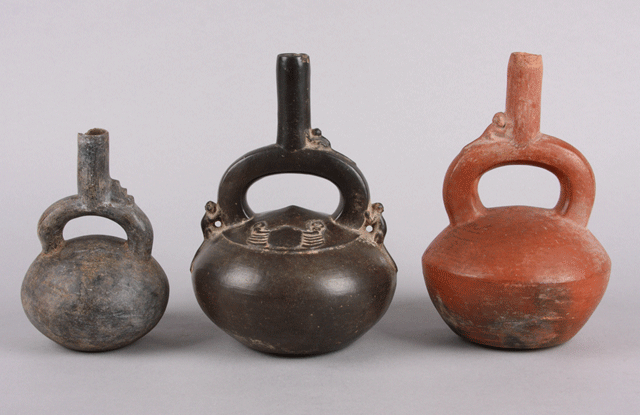
Photograph by B. Bernard

Photograph by B. Bernard
The most common form in Chimú ceramic art is the stirrup-spout jar.
This vessel type—abundant in both red and black wares—usually
includes an ellipsoidal body with a flat base. The name "stirrup spout"
comes from the supposed resemblance of the complex spout shape to stirrups
on saddles. The resemblance is a coincidence, however. South Americans
were unaware of horse gear (and horses) until the Spanish arrived.

37.9.7, mold-made stirrup-spout jar
Chimú-Inka period, Peru (A.D. 1470–1532)
Exchange item from the University of California
Red ware is most common in the Proto-Chimú and Early Chimú
periods, while very rare in later phases (the example shown above is one
of the exceptions). Red ware is usually painted rather than decorated in
low relief. Based on barely visible traces, the red ware jar shown above
was once painted with black lines, in a cursive style that suggests trained
but rapid brushwork. While the painted design has all but disappeared, the
jar retains its aesthetic appeal. It is 23 centimeters (9 inches) tall.
The next photograph shows the monkey modeled into the stirrup spout.
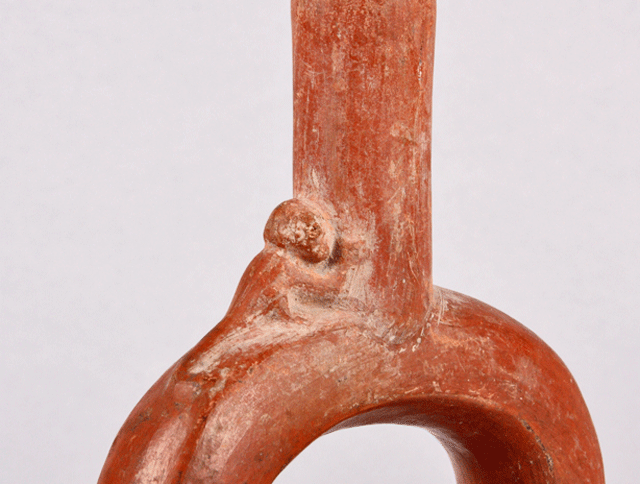
Photograph by B. Bernard
The small monkeys seen above and below
are typical of this culture. So is the marine creature (in this case, a crab)
on the jar shown below. The lower jar is 24 centimeters (9 1/4 inches) tall.
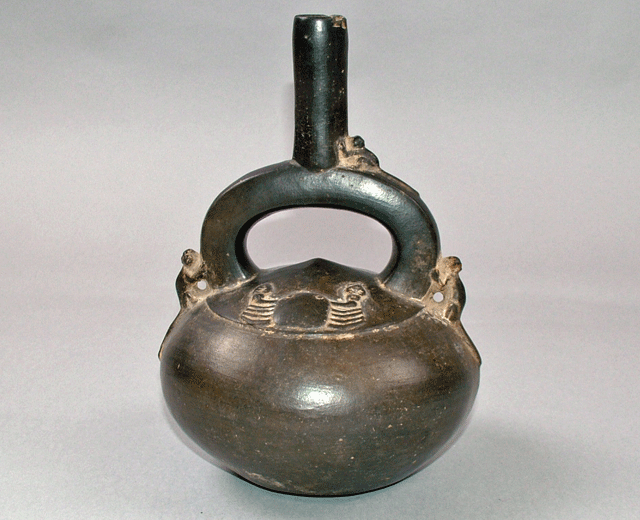
61.10.2, mold-made stirrup-spout jar with monkeys and crab
Chimú-Inka period, Peru (A.D. 1470–1532)
Hurd Collection of Peruvian Pottery; gift of S. L. "Bud" Maisel
The next two photographs show details of the animals on this vessel.
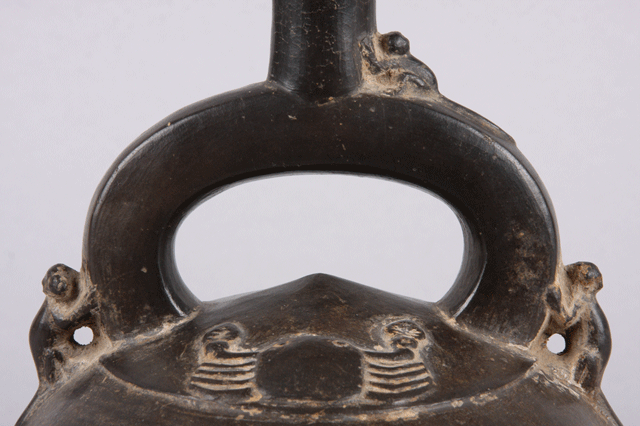

In contrast, the next jar, with its single stepped motif, epitomizes
the Chimú graphic and often minimalist style. It is 18 centimeters
(7 inches) tall.
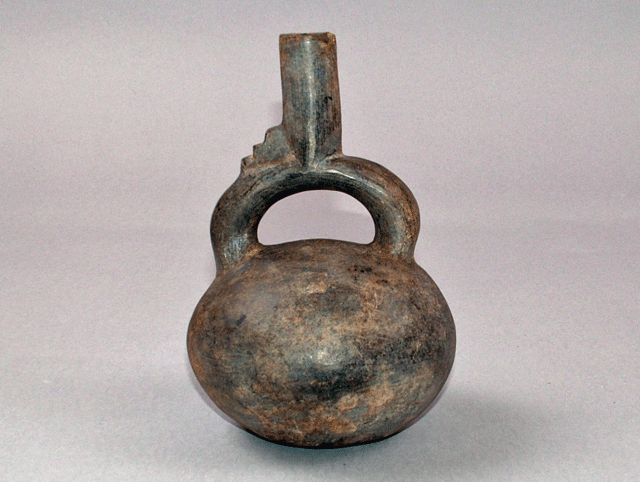
92.30.7, mold-made stirrup-spout jar with stepped motif
Chimú-Inka period, Peru (A.D. 1470–1532)
Gift of Mr. Lois Minium
To return to the thumbnail on the previous page, click here.
All content copyright © Maxwell Museum of Anthropology, University of New Mexico. High-resolution versions of photographs may be ordered from the Maxwell Museum's photo archives. Please make note of the catalogue numbers. For more information please visit the photo archives web page
Page last revised on March 7, 2011. Please report problems to toh@unm.edu